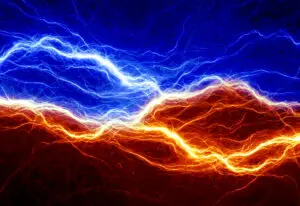 Researchers at the Naval Surface Warfare Center, Indian Head Division have reopened the case on low-energy nuclear reactions, or LENRs, largely unexplained phenomena that are at the core of theories about “cold fusion.” Five different government-funded laboratories under the control of the U.S. Navy, U.S. Army, and National Institutes of Standards and Technology will conduct experiments in an attempt to once and for all settle the debate over this little-understood and highly controversial topic. Despite the controversy and stigma associated with LENR, many experts across the U.S. military believe that the science behind them is sound, and if working technologies can someday be developed, it could transform military operations to an extent not seen in over a century.
Researchers at the Naval Surface Warfare Center, Indian Head Division have reopened the case on low-energy nuclear reactions, or LENRs, largely unexplained phenomena that are at the core of theories about “cold fusion.” Five different government-funded laboratories under the control of the U.S. Navy, U.S. Army, and National Institutes of Standards and Technology will conduct experiments in an attempt to once and for all settle the debate over this little-understood and highly controversial topic. Despite the controversy and stigma associated with LENR, many experts across the U.S. military believe that the science behind them is sound, and if working technologies can someday be developed, it could transform military operations to an extent not seen in over a century.
LENRs are a theory that attempts to explain results some scientists have observed over the last several decades which seem to indicate a unique type of anomalous energy production stemming from a certain class of non-fusion nuclear reactions which have been found to occur at or near room temperature. Interest in LENRs and so-called “cold fusion” dates back to the early 20th century, when scientists encountered anomalous heat effects produced by known chemical processes. These remained unexplained for decades. One of the biggest controversies in the field then came in 1989 when chemists Stanley Pons and Martin Fleischmann announced they had successfully reached a “sustained nuclear fusion reaction” at room temperature.
Scientists around the world began examining their data, and, needless to say, not all agreed with Fleischmann’s and Pons’s conclusions. Some believed low-temperature fusion reactions were indeed occurring, others believed some type of misunderstood chemical reaction was taking place, while others still thought the two chemists had observed some new type of phenomenon altogether. One scientist at the Massachusetts Institute of Technology (MIT) even went so far as to accuse the duo of fraud in the Boston Herald. No other laboratory was able to replicate their results, and Fleischmann and Pons eventually retracted their conclusions.
Leave a Reply